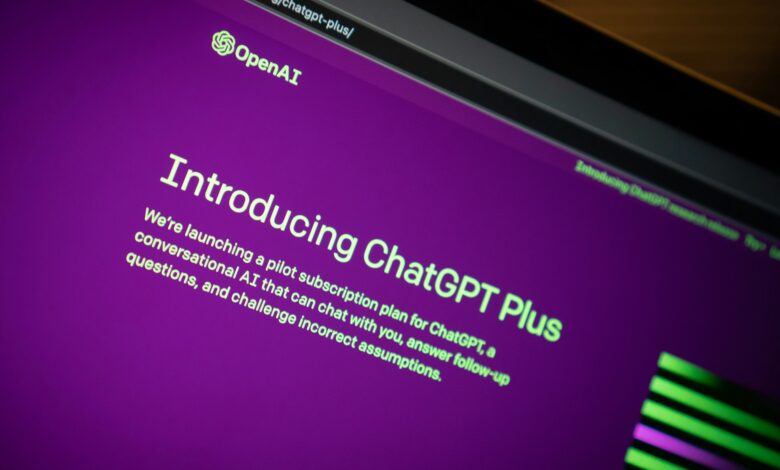
A major shift is underway in how people find and evaluate brands and it’s coming up again and again in conversations with communications and marketing professionals.
Generative AI (genAI) is not just another tech trend or hype, it’s a fundamental change in our online behaviour and this will disrupt digital marketing strategies. Google is making aggressive moves to retain its search dominance by integrating AI-generated summaries. This is clear evidence of turbulence in this new information ecosystem and a scramble to meet new expectations.
A few months ago, I had a task I’d been putting off, finding better HR software for our business. Instead of clicking through countless websites or scanning ads, I turned to ChatGPT. With one prompt, I got a shortlist of five providers, complete with pricing, features, pros and cons. I knew what I was looking at may not be perfect and completely accurate, but it saved me hours of research.
That experience made something click. Using these tools isn’t just for time-saving, it’s a a change in behaviour which will impact the decisions we make as consumers, as buyers of business services, and so forth. More people are turning to tools like ChatGPT, Gemini, Claude, and Llama to guide their purchasing decisions. As these AI assistants become our first stop, traditional digital approaches like SEO are no longer enough for brands to maintain visibility. We’re entering the era of Generative Engine Optimisation (GEO).
What is Generative Engine Optimisation?
GEO is the practice of shaping how brands show up in AI-generated answers. While SEO (Search Engine Optimisation) optimises for visibility in search engine results, GEO is about influencing how AI tools respond when users ask questions. These tools don’t deliver a list of links, they deliver full, conversational answers.
Large Language Models (LLMs), the technology behind genAI, generate answers by pulling from a complex mix of sources: trusted media, expert commentary, and lower-tier content like websites, social posts, and reviews. To influence these answers, brands need to ensure the right words appear in the right places, frequently and consistently.
I spoke to a GEO specialist we work alongside who made the point that, “The companies that influence the sources LLMs draw from will define their brand narrative in the AI-driven era,” says Ben Gibson, UK CEO of Labelium.
Is the search engine dead?
The shift is already well underway. In the US, 13 million users now rely on genAI as their primary search tool, a number that continues to rise. Moreover, one study found that users who debated with ChatGPT using personalised information had 81.7% higher odds of changing their opinion. This remarkable stat is a clear – and slightly frightening – signal of the persuasive power of these tools.
But GEO and SEO are not interchangeable.
I ask Ben Gibson for a clear distinction here. “GEO and SEO are two entirely different disciplines because what they are looking to affect, and the outcomes they produce, are radically different from one another,” he explains. “SEO drives authority for a page to generate traffic. GEO drives authority for a brand to generate awareness.”
While SEO seeks to rank pages higher in search results, GEO increases the likelihood that a brand will be recommended in response to a prompt. And crucially, GEO starts not with keywords, but with narrative control, a space where PR and brand communications have a major advantage.
Reputation control in a genAI world
In traditional search, users choose which links to click. In genAI, users often get one answer. That answer may be your brand or it may not be. If AI-generated responses surface outdated or inaccurate information, your brand’s reputation can take a hit. And what’s more, you may not even know it.
That’s why reputation management now extends far beyond your own channels or even media interaction. Currently, 83% of people trust genAI results as much or more than traditional search. And when AI is trained on collective internet content, it often communicates more clearly and persuasively than individual brand voices.
The good news: these systems can be influenced. The process starts with three key steps: Benchmarking your current AI-generated presence, analysing the associations and language driving that presence, and finally implementing a strategic content plan to shift it.
Why acting early matters
GenAI is compressing the research process. Where users once browsed 10 sites, now they may only hear two or three brand names. Those who act early will gain a lasting competitive edge. Those who wait may simply be filtered out.
And for some final wise words from our specialist, Ben Gibson, “This is an entirely new, and rapidly growing, opportunity. Although search engine marketing remains vital, brands need to move quickly to take advantage of the increasing time consumers are spending with genAI tools.”
This is a pivotal moment for brand communications. GenAI is changing the way people discover, evaluate, and choose brands. As tools like ChatGPT become the go-to for recommendations, GEO will define which brands rise and which ones fade into the background.
Just like my HR software search, more and more people will use genAI tools to shape their decisions, turning to Google only for final confirmation. We’re in a transition phase and the brands that act now will own the next era of online influence.





